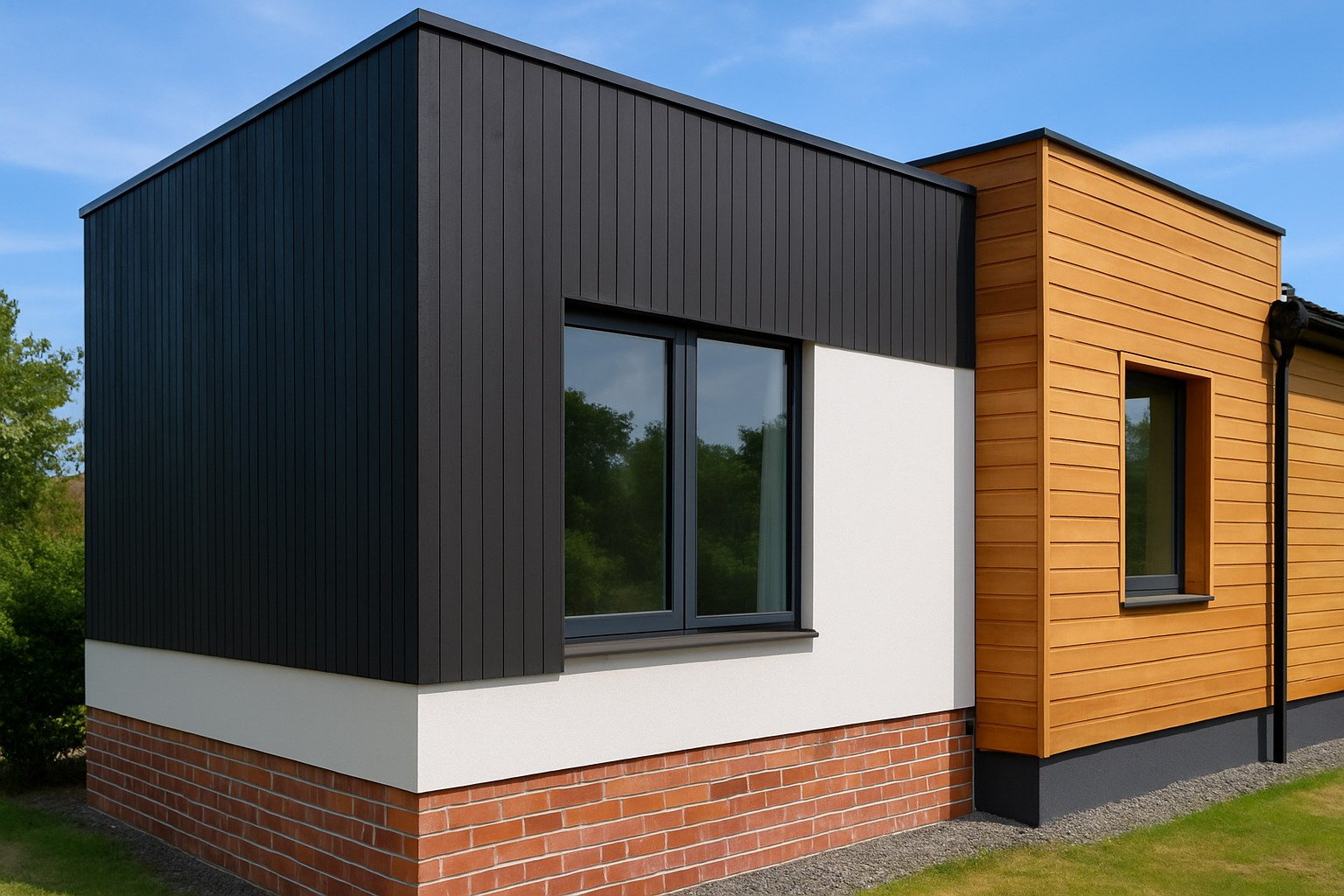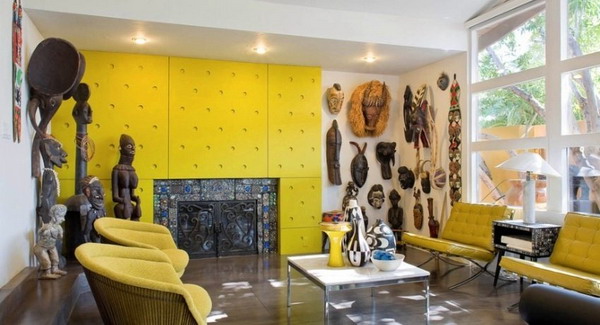The exterior cladding and siding of a building isn’t just its outer shell—it’s the first impression, the protective barrier, and a key component of a home’s energy performance. In 2026, these architectural elements are undergoing a transformation, driven by sustainability, innovation, and shifting design sensibilities.
With climate change and urbanization reshaping how we build, cladding materials are becoming smarter, greener, and more visually compelling. Homeowners, architects, and builders are no longer settling for basic vinyl or outdated timber—they’re seeking durable, eco-conscious, and aesthetically striking options that align with modern lifestyles.
Key Drivers Behind 2026 Cladding Trends:
- Sustainability mandates and green certifications
- Advanced material technology
- Design trends blending minimalism with texture
- Smart home integration and performance tracking
Whether you’re renovating an existing structure or designing a new build, staying informed on cladding trends in 2026 is essential. Let’s dive into what’s shaping the future of siding.
Sustainability-First: Eco-Friendly Cladding Materials
As eco-conscious living takes center stage, sustainable exterior cladding has become a non-negotiable priority. Builders are seeking materials with a low environmental footprint—both in production and performance.
♻️ Popular Sustainable Cladding Options in 2026:
| Material | Sustainable Qualities | Common Use |
| Reclaimed Wood | Upcycled, low processing energy | Residential facades, accents |
| Cork Panels | Renewable, thermally insulating, biodegradable | Eco-homes, modular structures |
| Hempcrete Panels | Carbon-negative, breathable, natural insulation | Passive houses, green builds |
| Recycled Aluminum Cladding | Infinitely recyclable, lightweight | Urban buildings, smart homes |
| Fiber Cement (Low Silica) | Durable, long life cycle, some brands now carbon-neutral | Multi-unit housing, coastal homes |
🌍 Why This Trend Matters
“The greenest building is the one that’s already built. But the next best is one that breathes, lasts, and doesn’t cost the planet.”
— Samantha Iyer, Eco-Architect and Net Zero Advocate
Designers in 2026 are shifting away from synthetic plastics and favoring natural composites that age gracefully and reduce landfill contribution. Certification systems like LEED v5 and Passive House Plus increasingly reward cladding materials with low embodied carbon and recyclability.
🔍 Case Study: Green Rebuild in Melbourne, Australia
A mid-century home was re-clad using carbon-neutral hempcrete panels and natural cork siding, reducing the building’s operational energy by 37%. Not only did it win design awards, but it also met Net Zero targets two years ahead of schedule.
Composite Materials: The Future of Durability and Design
2026 is witnessing a boom in composite cladding materials that offer the best of all worlds—resilience, design flexibility, and minimal maintenance.
Composite siding materials blend natural fibers, polymers, and minerals to create high-performance panels resistant to UV rays, termites, mold, and severe weather. With improved formulations, today’s composites mimic the look of real wood or stone with none of the upkeep.
⚙️ Leading Composite Cladding Innovations:
- Next-gen Fiber Cement: Engineered for fire resistance and longer paint cycles (up to 25 years)
- Wood-Plastic Composite (WPC): Maintains woodgrain aesthetics with water resistance and anti-fading properties
- Glass Fiber Reinforced Concrete (GFRC): Ultra-strong, thin panels ideal for sleek, modern facades
- Resin-Based Cladding Panels: Infused with pigments and resins for color consistency and crack prevention
💡 Design Flexibility Meets Strength
Composite materials are now available in customizable finishes—matte, textured, or metallic—and can be CNC cut to fit bold architectural shapes. They’re ideal for mixed-use projects, modular construction, and suburban homes looking to stand out without overspending.
“Composite siding is no longer the compromise option. In 2026, it’s the go-to for those who want endurance and edge.”
— Carlos Duran, Cladding Technology Consultant, NY
✅ Pros of Using Composite Siding in 2026
- Long lifespan (30–50 years)
- Fire, impact, and UV resistant
- Reduced maintenance (no rot, warping, or repainting)
- LEED-compliant options now widely available
- Visual versatility across residential and commercial designs
Natural Finishes: Wood, Stone, and Earth-Toned Appeal
The craving for authenticity in design has revived the popularity of natural finish cladding in 2026. Homeowners are leaning into organic textures and earthy palettes that ground buildings in their environment.
🌲 Trending Natural Cladding Finishes:
- Thermally Modified Timber: Enhanced durability with reduced moisture absorption
- Shou Sugi Ban (Charred Wood): A traditional Japanese method offering fire resistance and striking aesthetics
- Stone Veneer Panels: Lightweight alternatives to full masonry that mimic natural stone
- Clay-Based Renders: Eco-friendly and breathable, ideal for passive homes
This return to nature isn’t purely aesthetic. These materials are being treated with innovative non-toxic sealants and UV-stabilizers, extending lifespan while keeping the finish organic and untouched.
🎯 Earth-Tone Color Trends for 2026:
| Color Family | Popular Shades | Mood Evoked |
| Terracotta | Burnt sienna, clay, paprika | Warm, grounded |
| Sandstone | Beige, bone, desert | Calm, contemporary |
| Charcoal Wood | Ebony, ash, smoked oak | Bold, rustic-modern |
Bold Colors and Matte Finishes
In 2026, color confidence is redefining residential and commercial facades. While neutrals still have their place, we’re seeing a sharp rise in bold cladding colors, particularly when paired with matte finishes that add sophistication without gloss.
🔥 Top Cladding Color Trends in 2026:
- Deep Navy and Charcoal Black for dramatic contrast
- Olive Green and Rust Red for earthy-modern appeal
- Slate Blue and Mustard Yellow in mid-century inspired builds
Matte coatings offer more than looks—they’re often UV-resistant, fingerprint-proof, and better at hiding surface imperfections.
“Color is architecture’s fastest mood-setter. In 2026, we’re finally seeing exteriors break free from beige monotony.”
— Lena Hwang, Exterior Color Consultant, Amsterdam
High-Performance Metal Siding
Metal siding has evolved into a luxury and performance powerhouse. No longer reserved for industrial zones, it’s now being embraced for sleek homes, green buildings, and modern cabins.
🧱 Trending Metal Siding Types:
| Metal Type | Benefits |
| Aluminum Panels | Rust-resistant, lightweight, recyclable |
| Corten Steel | Develops a natural rust patina, no painting |
| Zinc Cladding | Self-healing patina, low maintenance |
| Steel Sheets | High strength, great for impact zones |
Standing seam and interlocking panel systems are becoming more accessible, with concealed fasteners and thermally broken backing layers to reduce heat gain. Metal is also ideal for fire zones, earning top Class A fire ratings.
Smart Cladding Systems and Integrated Technology
2026 is seeing a revolution in tech-enhanced cladding, as materials become smarter, more connected, and more climate-responsive.
📲 Smart Cladding Features Gaining Popularity:
- Embedded Solar Panels: Invisible solar cells within cladding panels
- Moisture-Sensing Layers: Alert homeowners to trapped humidity or rot risks
- Phase-Change Materials: Store and release heat to stabilize interior temps
- Color-Changing Finishes: Shift based on sun angle and light levels
These systems align with the growth of Net Zero Energy Homes and Smart Homes, where building envelopes are now data-driven.
“Tomorrow’s cladding isn’t passive—it’s interactive, adaptive, and connected to your phone.”
— Andre Lopez, Building Envelope Technologist, Toronto
Prefabricated and Modular Cladding Panels
Speed and precision are top priorities in 2026’s construction sector, which is why prefabricated cladding systems are trending. Pre-cut, modular siding panels reduce on-site waste, installation time, and labor costs.
🏗️ Benefits of Prefab Cladding in 2026:
- Factory-cut for precision
- Integrated insulation and vapor control
- Faster installs (up to 40% faster than traditional)
- Fewer installation errors or callbacks
This trend supports the booming modular home and off-site construction industries, where cladding systems are installed as part of factory-assembled wall sections.
3D Textured and Geometric Cladding Designs
Gone are the days of flat, featureless walls. In 2026, architectural texture is in. Designers are using 3D cladding surfaces to add movement, contrast, and character to facades.
✨ Popular Textured Cladding Styles:
- Ribbed Concrete Panels
- Fluted Aluminum Slats
- Parametric Wood Facades
- Brick Slips with Mixed Depths
Thanks to robotic fabrication and CNC technology, custom textures are now possible on-demand, making bold statements on both residential and commercial projects.
Climate-Responsive Cladding Choices
Location-specific performance is key in 2026. Builders are choosing climate-adapted cladding systems based on temperature swings, UV levels, and precipitation rates.
🗺️ Best Materials by Climate Zone:
| Climate Zone | Recommended Cladding |
| Tropical/Humid | Composite panels, treated timber, metal |
| Desert/Arid | Stone veneer, adobe-style stucco, fiber cement |
| Cold/Mountain | Insulated metal panels, cork, timber with UV sealant |
| Coastal | Salt-resistant aluminum, sealed concrete, zinc |
Energy efficiency isn’t just about insulation—it’s also about choosing a cladding material that won’t warp, crack, or rot in your environment.
Minimal Maintenance and Longevity Trends
In a busy world, low-maintenance exteriors are more desirable than ever. In 2026, homeowners are choosing cladding that lasts decades without sanding, painting, or sealing.
🧼 Features to Look For:
- UV-protected finishes that prevent fading
- Anti-microbial coatings to reduce mold or mildew
- Self-cleaning technology via titanium dioxide (common in modern ceramics)
- 30–50 year warranties from leading brands
These trends also reduce the total cost of ownership over time, especially in remote or vacation homes where regular upkeep isn’t feasible.
Conclusion: What to Prioritize in 2026 Exterior Cladding and Siding
As we navigate into 2026, the world of exterior cladding and siding is dynamic, design-forward, and deeply sustainable. Whether you’re building from scratch or upgrading an existing structure, the key is to balance form, function, and footprint.
✅ Key Takeaways:
- Go green with recycled, upcycled, and low-carbon options
- Explore textures and color for bold curb appeal
- Think smart with tech-integrated materials
- Choose wisely based on your climate and lifestyle
The siding you choose today can define your home’s performance, style, and resale value for decades to come. Make it count.



